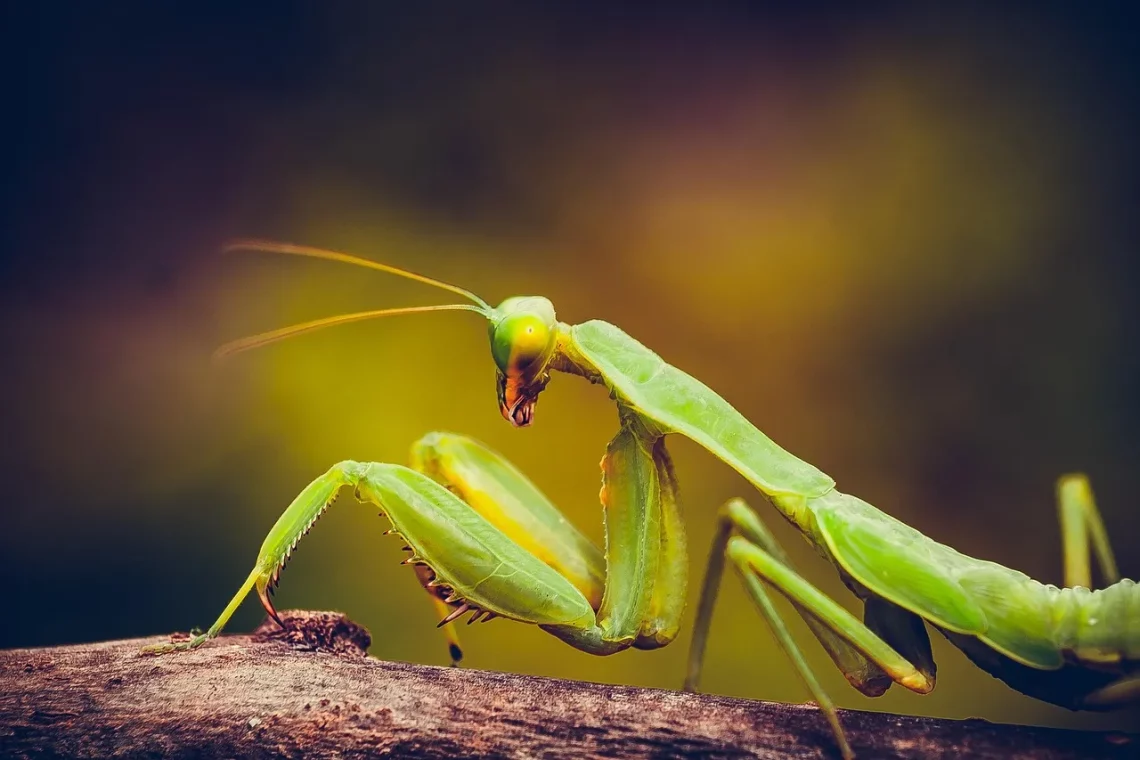
Understanding Mantis Egg Cases: Nature’s Intriguing Survival Strategy
The natural world is filled with remarkable strategies and adaptations that ensure the survival of various species. Among these are the fascinating egg cases of the mantis, a creature that has captivated the interest of entomologists and nature enthusiasts alike. These structures, often referred to as oothecae, serve as protective capsules for the mantis eggs, showcasing the intricate relationship between organisms and their environments. The design and functionality of these egg cases not only speak to the resilience of the mantis but also highlight broader themes of survival in the animal kingdom.
The mantis, often recognized for its predatory prowess and unique physique, employs these egg cases as a crucial component of its reproductive strategy. By providing a safe haven for their developing young, mantises increase the likelihood of their offspring reaching maturity. This protective mechanism is particularly vital in the face of numerous threats that eggs and young insects encounter in their ecosystems. Understanding the structure, composition, and significance of mantis egg cases offers insight into the evolutionary adaptations that have allowed these insects to thrive in diverse habitats.
As we delve deeper into the fascinating world of mantis egg cases, we uncover the layers of complexity and ingenuity embedded in their design. From their external characteristics to their role in the life cycle of a mantis, each aspect reveals a story of survival and adaptation that is as intriguing as the mantis itself.
The Structure and Composition of Mantis Egg Cases
Mantis egg cases, or oothecae, are fascinating structures that play a vital role in the reproductive cycle of these insects. Typically, these cases are composed of a protective outer layer made from a secretion of the female mantis. This unique material hardens upon exposure to air, creating a robust barrier that shields the eggs from predators and environmental hazards. The texture and color of the ootheca can vary significantly depending on the species of mantis, ranging from smooth and shiny surfaces to rough and camouflaged textures that help them blend into their surroundings.
Inside the protective casing, mantis eggs are nestled in a carefully organized arrangement. The number of eggs within a single case can vary widely, often ranging from a few dozen to over a hundred, depending on the species and environmental conditions. The eggs themselves are small, oval-shaped, and typically yellowish or brown in color. They are designed to withstand fluctuations in temperature and humidity, ensuring that the developing embryos have the best chance of survival.
The design of these egg cases is a result of millions of years of evolution, shaped by the need to protect the next generation from a variety of threats. In the wild, mantis eggs face dangers from predators such as birds, other insects, and even environmental factors like extreme weather. The hard exterior of the ootheca provides a formidable defense, while the arrangement and number of eggs within can ensure that at least some offspring survive to adulthood.
Additionally, mantis egg cases exhibit fascinating behaviors related to their placement. Female mantises often choose locations that offer optimal conditions for the eggs, such as sheltered areas that provide protection from direct sunlight and excessive moisture. This strategic placement further enhances the chances of survival for the next generation, showcasing the intricate interplay between behavior and environmental adaptation.
The Role of Oothecae in the Life Cycle of Mantises
Understanding the role of oothecae in the life cycle of mantises is crucial to appreciating their survival strategy. After mating, the female mantis invests significant energy into producing and laying her eggs. The process of creating an ootheca can take several hours, during which the female meticulously constructs the case, ensuring it is secure and well-placed.
Once the ootheca is completed and the eggs are laid, the female mantis often leaves the eggs to fend for themselves. This behavior might seem counterintuitive, but it is rooted in survival instincts. The female mantis is aware that her primary role is to ensure the next generation’s continuation, and once the eggs are laid, her chances of survival are better served by seeking food or avoiding predators.
As the eggs develop within the protective casing, they undergo several stages before hatching. Depending on environmental conditions, this incubation period can last anywhere from a few weeks to several months. The timing of hatching is crucial and often synchronized with the arrival of favorable weather conditions, such as warmth and moisture, which are critical for the survival of the nymphs once they emerge.
When the young mantises finally hatch, they break free from the ootheca and emerge as miniature versions of their adult counterparts, ready to face the world. This emergence is often timed with the availability of food sources, such as small insects, ensuring that the newly hatched mantises can quickly begin their predatory lifestyles.
The life cycle of mantises, from egg to adult, is a testament to their adaptability and resilience. The ootheca not only serves as a protective barrier but also plays a pivotal role in the timing and success of the next generation’s emergence, highlighting the intricate relationship between reproduction and environmental conditions.
Adaptations and Strategies for Egg Case Survival
The adaptations and strategies that mantises employ regarding their egg cases are not merely instinctual; they are responses to the challenges posed by their environments. One of the most intriguing aspects of mantis reproduction is the variability in egg case production among different species. Some mantises produce a single, large ootheca, while others may lay several smaller cases throughout their reproductive season. This variability can be seen as a strategic adaptation to ensure that at least some offspring survive in a world full of potential threats.
The location where a female mantis chooses to lay her ootheca can significantly influence the survival of her eggs. Mantis species are known to exhibit specific preferences for particular habitats, which can range from dense foliage to open fields. By selecting optimal laying sites, females can enhance the chances of their eggs avoiding predators and environmental stressors.
Furthermore, some mantis species have been observed to exhibit communal nesting behaviors, where multiple females lay their eggs in close proximity to one another. This behavior may offer additional protection against predators, as the sheer number of oothecae can confuse potential threats, increasing the likelihood that some eggs will survive.
Another fascinating adaptation is the camouflage of oothecae. Many mantis species produce egg cases that mimic the textures and colors of their surroundings, making them difficult for predators to detect. This evolutionary strategy highlights the importance of visual deception in nature, showcasing how animals have evolved to blend into their environments for survival.
In addition to physical adaptations, mantises also exhibit behavioral strategies to enhance the survival of their offspring. For instance, some females guard their oothecae immediately after laying them, deterring predators and ensuring the safety of their eggs. This protective behavior, while risky for the female, emphasizes the instinctual drive to ensure the continuation of their lineage.
In summary, the adaptations and strategies associated with mantis egg cases are remarkable examples of nature’s ingenuity. By combining physical, behavioral, and environmental considerations, mantises have developed a multifaceted approach to ensure the survival of their species in a competitive and often perilous world.
Conclusion: The Significance of Mantis Egg Cases in Ecosystems
Mantis egg cases are more than just protective capsules; they represent a complex interplay of evolutionary strategies that speak to the resilience of life. Their unique structures, roles in the life cycle, and adaptations highlight the importance of survival mechanisms in the natural world. Understanding these fascinating egg cases provides valuable insight into the broader ecological dynamics at play and underscores the interconnectedness of species within their environments.
As mantises play a crucial role in controlling pest populations, the success of their offspring directly impacts the health of ecosystems. By contributing to the balance of insect populations, mantises help maintain biodiversity and promote the stability of various habitats. Thus, the study of mantis egg cases is not only a scientific inquiry into a remarkable adaptation but also a reflection of the intricate relationships that define life on Earth.
In exploring the world of mantis egg cases, we gain a deeper appreciation for the complexities of nature and the survival strategies that have evolved over millennia. From their remarkable structures to the behaviors surrounding their creation and protection, mantis egg cases are a testament to the wonders of the natural world and the relentless pursuit of survival that characterizes all living beings.




